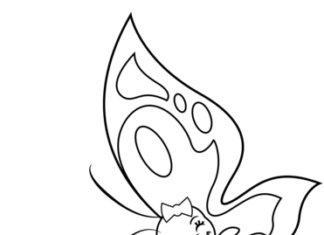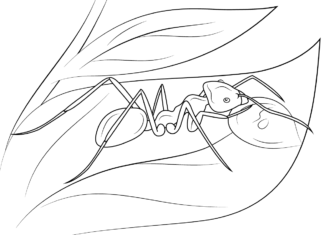Insects are a huge and diverse group of arthropods that constitute the most numerous and diverse class of organisms on Earth. They include millions of species, and their importance in ecosystems and to humans is enormous.
Coloring Book Insects
information
- Features: Insects have several features that distinguish them from other arthropods. They have three pairs of legs, a body divided into three segments (head, thorax and abdomen) and usually two pairs of wings (if present).
- Species diversity: It is estimated that there may be as many as 10 million species of insects on Earth, making them the most numerous group of organisms on the planet.
- Ecological diversity: Insects occupy many different ecological niches. We can find them in virtually every environment on Earth, from soil to water, from forests to deserts.
- Role in ecosystems: Insects play a key role in ecosystems. They perform functions such as pollination of plants (which is essential for fruit and seed production), decomposition of organic matter, population control of other organisms (such as predation on pests), and many others.
- Pests and beneficial insects: Some insects can be pests to crops and other plants, causing economic losses. But many others are beneficial, helping to control pest populations, pollinate plants and degrade organic waste.
- Metamorphosis: Many insects go through a process of metamorphosis, which means that they change morphologically at different stages of their lives. Examples include complete metamorphosis (eggs - larvae - pupa - adult) and incomplete metamorphosis (eggs - nymphs - adult).
- Communications: Insects use a variety of communication methods, such as sounds (singing, buzzing), pheromones (chemical substances secreted for communication), gestures and body shapes.
- Adaptations to the environment: Insects have developed numerous adaptations to their environments, such as camouflage, mimicry (mimicking other organisms to protect themselves from predators), special mouth apparatuses for food intake, complex wing patterns and many others.
- Impact on humans: Insects play a significant role in human life. They are a source of food (e.g., edible insects), raw materials (e.g., the mulberry silkworm) and can inspire technology (e.g., insect flight vs. human machine flight).
- Research and protection: Insect research is of great importance to understanding biology and ecology. However, many insects are endangered due to habitat loss, pesticide use and other factors. Therefore, protecting insect diversity is important for maintaining ecological balance.
trivia
- The most numerous group of organisms: Insects are the most numerous group of organisms on Earth. It is estimated that there are at least one million species of insects, and it is likely that their number exceeds 10 million in total.
- Extraordinary diversity: Insects are found in almost every ecosystem on Earth, from oceans to mountains, deserts to rainforests. The diversity of their forms and ecological functions is staggering.
- An evolutionary milestone: The first land life forms on Earth were insects. Their ability to adapt to new habitats was crucial to the colonization of land.
- Wing speed: Some insects, such as beetles in the Carabidae family, can move at speeds as high as 320 times their body length in a second. That makes them some of the fastest animals on Earth compared to their size.
- Wings in different ways: Not all insects have wings. Some species are wingless, while others, such as ants and bees, have only two pairs of wings in females (queens), while males have one pair.
- Adaptations for extreme conditions: Some insects can survive in extreme conditions. For example, insects in the family Tenebrionidae can survive in hot and dry habitats, and ants in the genus Camponotus can survive in cold temperatures by reducing metabolic activity.
- Advanced social skills: Some insect species, such as ants, bees and termites, exhibit complex social behavior, including division of labor, care of offspring and construction of advanced social structures.
- Edible insects: In some cultures, insects such as crickets, larvae and ants are seen as food. They are a source of protein and other nutrients.
- Inspiration for technology: Many technologies have been inspired by the properties and structures of insects. An example is the aerodynamics of insect wings, which has influenced the development of aviation designs.
- Role in forensic medicine: Insects can play a key role in forensic investigations, making it possible to determine the time of a victim's death based on the developmental stage of fly larvae.




